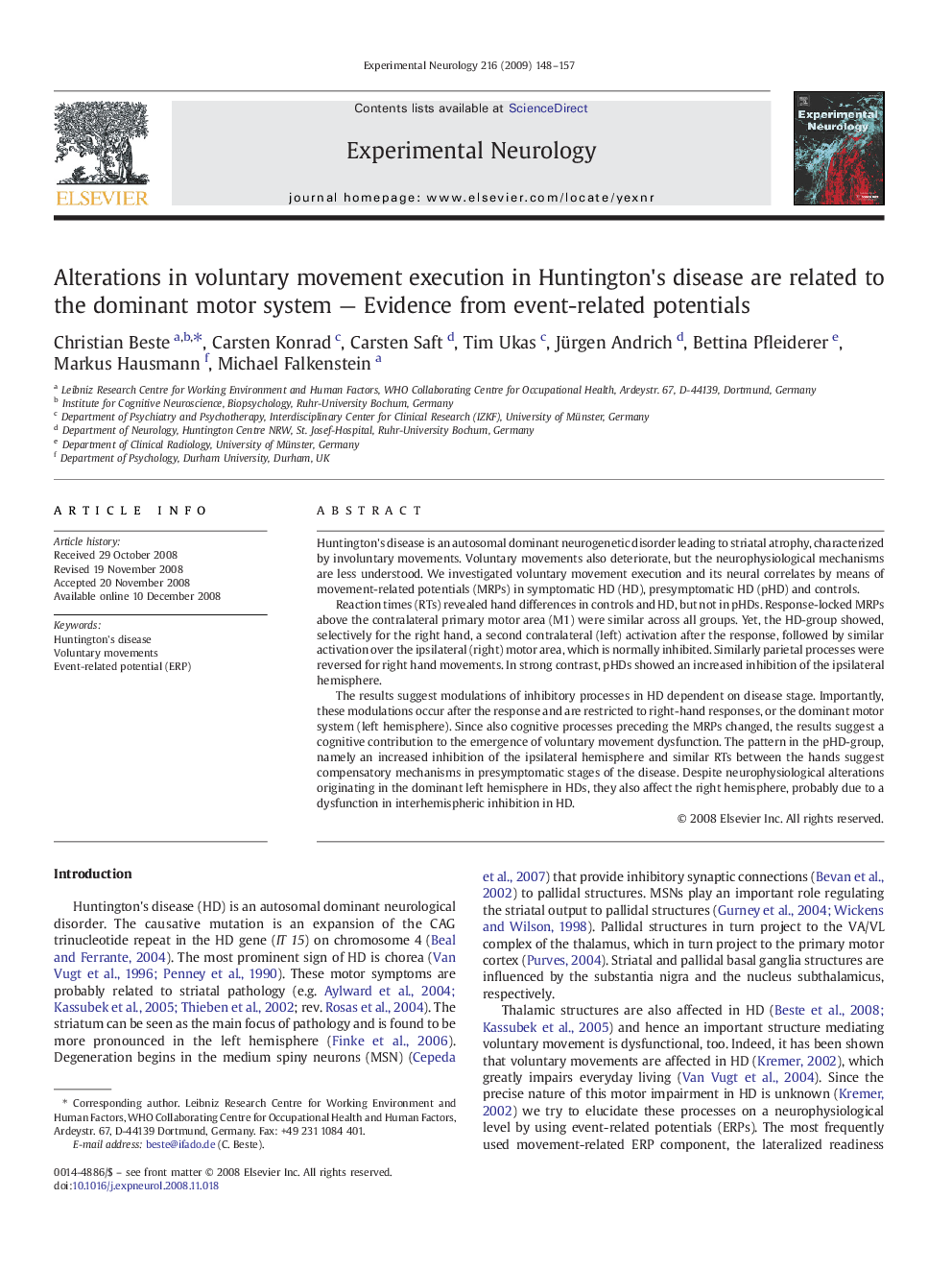| Article ID | Journal | Published Year | Pages | File Type |
|---|---|---|---|---|
| 3056458 | Experimental Neurology | 2009 | 10 Pages |
Huntington's disease is an autosomal dominant neurogenetic disorder leading to striatal atrophy, characterized by involuntary movements. Voluntary movements also deteriorate, but the neurophysiological mechanisms are less understood. We investigated voluntary movement execution and its neural correlates by means of movement-related potentials (MRPs) in symptomatic HD (HD), presymptomatic HD (pHD) and controls.Reaction times (RTs) revealed hand differences in controls and HD, but not in pHDs. Response-locked MRPs above the contralateral primary motor area (M1) were similar across all groups. Yet, the HD-group showed, selectively for the right hand, a second contralateral (left) activation after the response, followed by similar activation over the ipsilateral (right) motor area, which is normally inhibited. Similarly parietal processes were reversed for right hand movements. In strong contrast, pHDs showed an increased inhibition of the ipsilateral hemisphere.The results suggest modulations of inhibitory processes in HD dependent on disease stage. Importantly, these modulations occur after the response and are restricted to right-hand responses, or the dominant motor system (left hemisphere). Since also cognitive processes preceding the MRPs changed, the results suggest a cognitive contribution to the emergence of voluntary movement dysfunction. The pattern in the pHD-group, namely an increased inhibition of the ipsilateral hemisphere and similar RTs between the hands suggest compensatory mechanisms in presymptomatic stages of the disease. Despite neurophysiological alterations originating in the dominant left hemisphere in HDs, they also affect the right hemisphere, probably due to a dysfunction in interhemispheric inhibition in HD.
